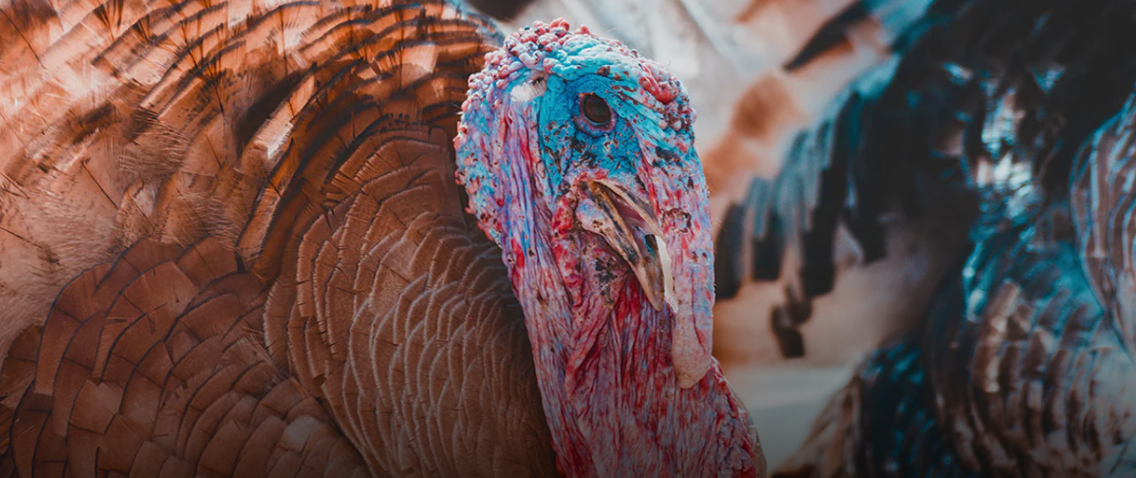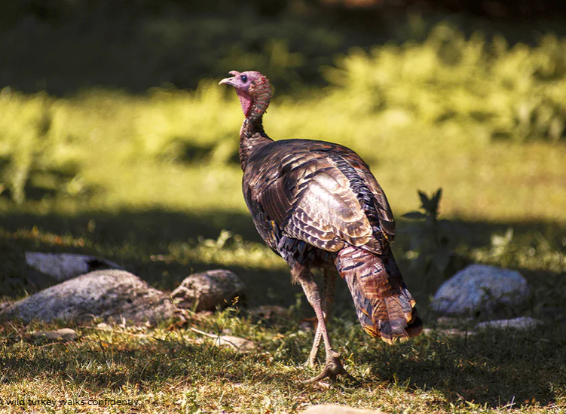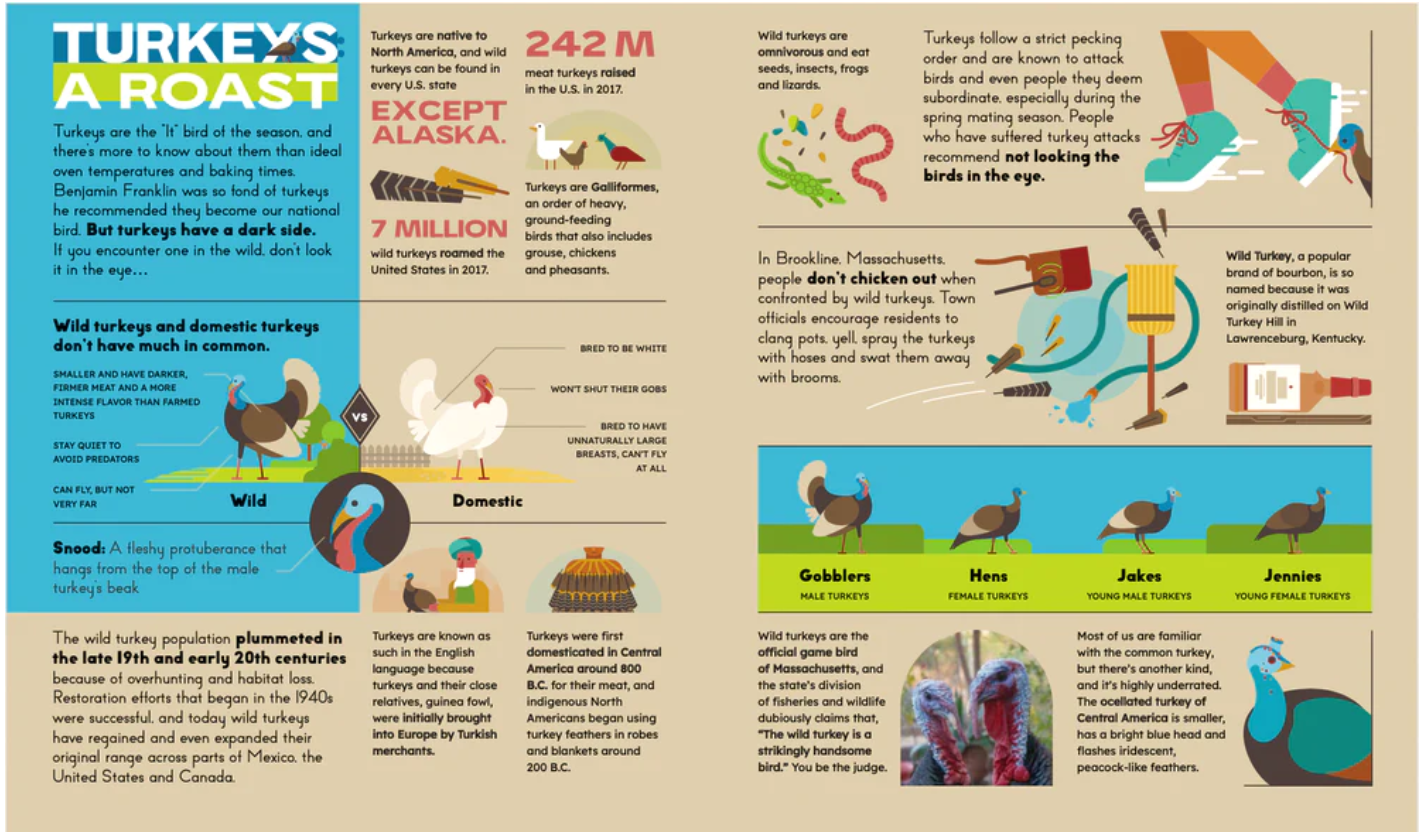



8 facts you didn't know about turkeys
How much do you really know about the delicious bird that graces your Thanksgiving table each year?Turkeys are the "It" bird of the season. and there's more to know about them than ideal over temperatures and baking times. Benjamin Franklin was so fond of turkeys he recommended they become our national bird. But turkeys have a dark side. If you encounter one in the wild, don't look it in the eye...

1. Turkey Fast Facts
- Turkeys are native to North America, and wild turkeys can be found in every U.S state except Alaska.
- 7 Million wild turkeys roamed the United States in 2017
- 242 Million meat tukeys were raisedd in the U.S. in 2017
- Turkeys are Galliforms, an order of heavy, ground-feeding birds that also includes grouse, chickens and pheasants.
- Wild Turkeys are omnivorous and eat seeds, insects, frogs and lizards.
2. Turkeys Weren't Always So Plentiful
The wild turkey population plummeted in the late 19th and early 20th centuries because of overhunting and habitat loss. Restoration efforts that began in the 1940s were successful, and today wild turkeys have regained and even expanded their original range across parts of Mexico, the United States and Canada.

3. Turkeys Will Fight You
Turkeys follow a strict pecking order and are known to attack birds and even people they deem subordinate, especially during the spring mating season. People who have suffered turkey attacks recommend not looking the birds in the eye.
In Brookline, Massachusetts, people don't chicken out when confronted by wild turkeys. Town officials encourage residents to clang pots, yell, spray the turkeys with hoses and swat them away with brooms.

4. Wild Turkeys and Domestic Turkeys Don't Have Much In Common
One uniting factor among turkeys is their snood, the fleshy (and, I'll say it, kind of disturbing) protuberance that hangs from the top of the male turkey's beaks. Other than that, though, wild and domestic turkeys don't have much in common.
Wild turkeys are...
- Smaller and have darker, firmer meat that has a more intense flavor than their farmed cousins
- Stay quiet to avoid predators
- Can fly, but not very far.
Domestic turkeys are...
- Bred to be white.
- Won't shut their gobs
- Bred to have unnaturally large breasts
- Can't fly at all.
5. A Bird of Another Feather
Most of us are familiar with the common turkey, but there's another kind, and it's highly underrated. The ocellated turkey of Central America is smaller and has a bright blue head and flashes iridescent, peacock-like feathers.
6. What's In a Name?
Turkeys are known as such in the English language because turkeys and their close relatives, guinea fowl, were initially brought into Europe by Turkish merchants.
Turkeys were first domesticated in Central America around 800 B.C. for their meat, and indigenous North Americans began using turkey feathers in robes and blankets around 200 B.C.
Additionally, all turkeys aren't all named alike. Like other animals, turkeys have different names based on their gender and age:
- Male turkeys = gobblers
- Female turkeys = hens
- Young male turkeys = jakes
- Young female turkeys = jennies
7. Turkeys: A Massachusetts Icon
Wild Turkeys are the official game bird of Massachusetts, and the state's division of fisheries and wildlife dubiously claims that "The wild turkey is a strikingly handsome bird." You be the judge.
8. A Spirited Bird
Wild Turkey, a popular brand of bourbon, is so named because it was originally distilled on Wild Turkey Hill in Lawrenceburg, Kentucky.

You can download our handy infographic (containing all of these fascinating facts) here!









